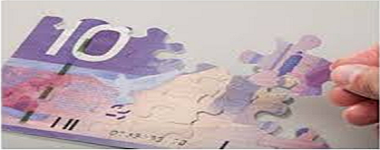Last week I showed that Australia’s net government debt to GDP ratio is nothing to panic about when compared to the rest of the world. We’re currently at under 12 per cent, whereas most OECD nations have ratios of 50 per cent and above.

Perhaps that’s one reason Australia’s economy is relatively strong.
I also showed that most countries aren’t like businesses in that most countries have a net negative equity position — their liabilities exceed their assets — which is a situation that would have most companies on their way to being declared bankrupt.
But maybe most countries are headed for bankruptcy. That, after all, was the alarmist tone of Australia’s National Commission of Audit about the trend in Australia’s public debt, which will rise from 12 per cent to 16 per cent of GDP on a “business as usual†scenario.
So how to decide?
Straw Man Modeling
This is why economists develop models: to try out various hypothetical situations and see what happens. I’m a strident critic of how the mainstream develops its models, with mad assumptions like the one I pointed out last week by Robert Barro: that people leave bequests to enable their distant relatives to pay taxes:
“A network of intergenerational transfers makes the typical person a part of an extended family that goes on indefinitely. In this setting, households capitalise the entire array of expected future taxes, and thereby plan effectively with an infinite horizon…â€
That sort of nonsense puts an imaginary rabbit in an imaginary hat, and then expects us to applaud when it’s pulled out of the hat by an imaginary invisible hand.
What I prefer to do is build a reasonable replica of the monetary world in which we actually live, and see what happens if various monetary settings are changed, which is why I developed the open-source program Minsky.
I’ve used it to take a simple model of a pure credit economy — one in which banks are the only source of money — and add in a government sector that finances itself by borrowing from its central bank. You can download the model from here (right click and choose “Save Asâ€; if you left-click you’ll just get XML gobbledegook in your browser) and run it yourself using Minsky.

